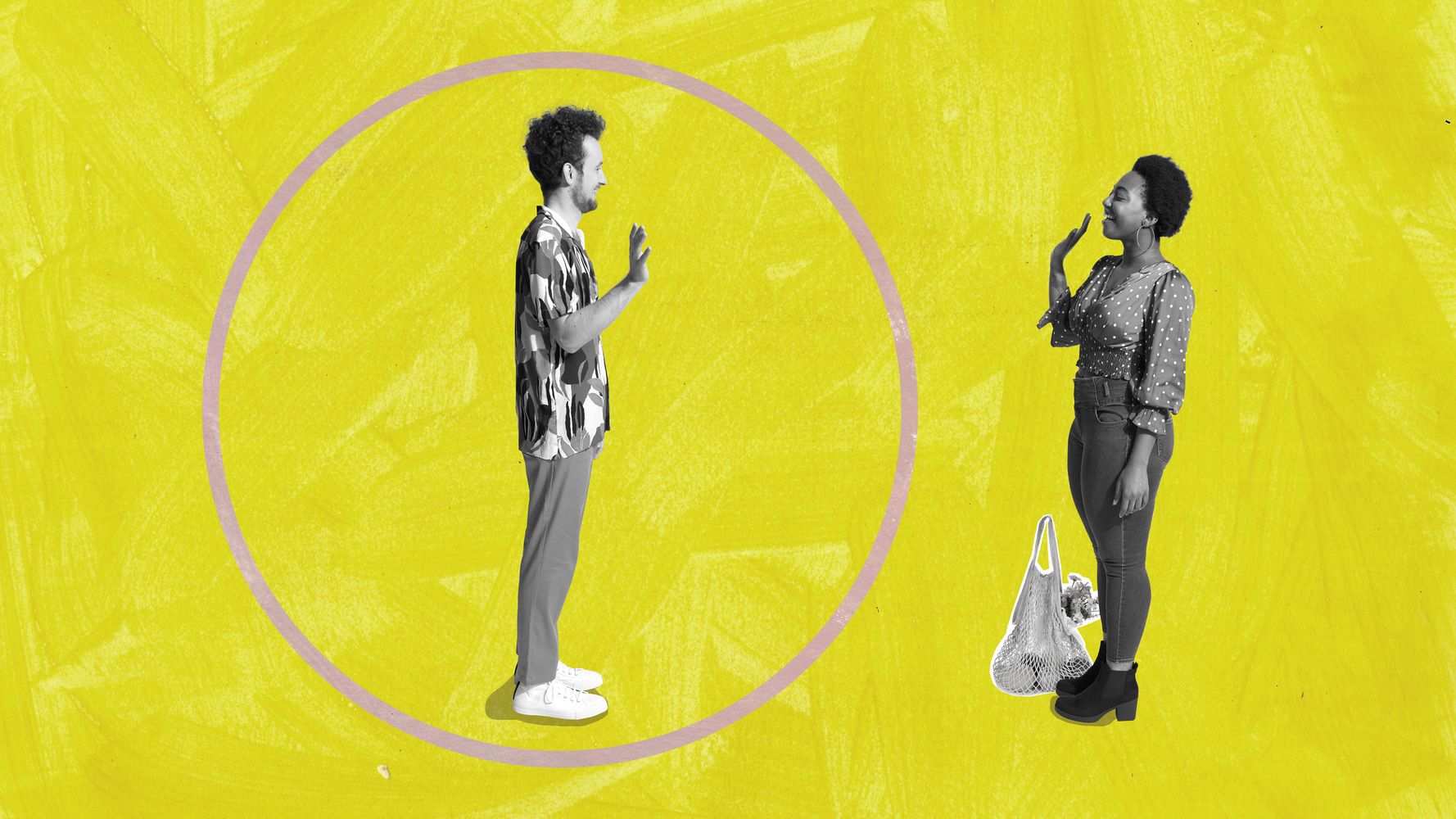As coronavirus case numbers surge across the country, it’s not just the obvious places you should avoid: political rallies, large weddings, crowded bars, restaurants and night clubs.
More and more, health experts warn that COVID-19 is being transmitted at the intimate get-togethers many of us believed were relatively safe: Dinner parties with close, trusted friends. Game nights with family members who live in different households. Sleepovers and learning pods with just a handful of kids and parents involved.
“Right now, we are seeing rampant increases in transmission of the virus within the community, often tied to small gatherings or small outbreaks in controlled settings,” said Kirsten Hokeness, professor and chair of the Department of Science and Technology at Bryant University and an expert in immunology, virology, microbiology and human health and disease.
Some health experts and government officials are calling this kind of transmission “living room spread.” It’s a simple concept: When people from different households and different social bubbles get together indoors sans masks ― to share some wings over a football game, for instance, or to have a dinner party ― they tend to let their guards down.
Friends and family may swear they’ll keep to their separate tables or corners of the room beforehand, but at the moment, it’s all too easy to fall back into our old habits: Masks get taken off so we can hear each other better, we get closer, we try to sneak in a quick hug goodbye. We’re social animals, after all, and though this has been the longest eight months of many of our lives, we’re still acclimating to life with COVID-19.
Still, because the virus can be passed asymptomatically, scenarios like these are scarily easy ways to contract the coronavirus. Your cousin or close friend may appear healthy while still being a carrier of the virus.
Unlike super-spreader events, “living room spread” or mini spread events make contract tracing increasingly difficult for health department officials, Hokeness said.
“What this means is that we need to be more careful with who we interact with, limiting it to those most necessary,” she said. “We need to decrease our inner circles once again until the levels of the virus become more manageable in the population.”
It’s worth noting that some epidemiologists say it’s impossible to estimate how much social gatherings contribute to community transmission. They stress that large public gatherings remain the biggest culprit. Now that the virus is so widespread, they say it’s become increasingly difficult to pinpoint a single source for an outbreak.
“More and more, our exposures are due to community spread and are not traceable to a single event,” Nicole Peske, chief communications officer for the North Dakota Department of Health, told The New York Times on Monday. “Many individuals are reporting more than one exposure.”
Still, state governments can and are enacting restrictions limiting the number of people allowed to gather in private homes. Given how out of control the virus is now ― new infections surpassed 187,833 on Friday, exceeding the last daily record by more than 10,000, while the number of people hospitalized with COVID-19 reached 80,000 ― it couldn’t hurt to scale back on socializing.
We’re all sick of social distancing, but as we get deeper into the winter months and spend more time indoors, it’s never been more important to keep our social circles as teeny-tiny and antisocial as possible.
“The best way to avoid flooding our hospitals is to be responsible, stay with family members, avoid going out if not essential.”
– Jagdish Khubchandani, a professor of public health at New Mexico State University
“It’s hard to tell who is a carrier of the virus or who is infected,” said Jagdish Khubchandani, a professor of public health at New Mexico State University. “We interact with people from all walks of life, these people also interact with others, and it’s hard to create a circle or keep a track of who interacts with who.”
“The best way to avoid flooding our hospitals is to be responsible, stay with family members, avoid going out if not essential,” he added.
If you’ve let more people into your social bubbles and quarantine pods in the last few months, now is the time to tighten up again. (Plus, with a vaccine now in sight, how depressing would it be to catch the virus mere months before distribution may be possible?)
Sans a vaccine, face masks and tight-knit social bubbles are the best mechanisms we have to protect ourselves and each other, Hokeness said. Both she and Khubchandani agreed that a maximum of 10 people should be the limitation on the bubble, when you factor in family size, relatives and very close friends.
To be safest, confine your bubble to only those people who live in your household, said Nikole Benders-Hadi, the medical director of behavioral health at Doctor On Demand.
“To further outline the risk, think about the fact that for every new person you come into contact with, you have potentially exposed yourself to an additional 5-10 individuals depending on how isolated (or not) that person may have recently been,” Benders-Hadi said.
Here’s how to effectively prune your social bubble without coming across as a jerk.
At this point, you may be realizing that your bubble has gotten big enough to burst. How do you close up said bubble without losing friends or coming across as judgmental in the process? (“Sorry, you didn’t make the cut on my redefined quarantine bubble! Also, I’ve seen your Instagram stories, maybe you should do some pruning, too.” Please don’t take that tact.)
Be polite and courteous, but firm. If they ask why you continue to say you’re unavailable for plans, let them know that for the time being, you’re being extra cautious because of the COVID-19 surge.
“It’s OK to disagree with how others are reacting and responding to this virus, but you should be able to say that for the time being, it’s in the best interest of you and your family to restrict gathering,” Hokeness said.
“You have to be confident enough to surround yourself with people that are like-minded and whom you trust when it comes to how they approach this pandemic,” she added.
It’s important to note that you’re not likely to change people’s minds or behavior in their own lives when you broach this conversation. No need to go into a safety spiel, you’re already excommunicating them from your pandemic pod.
“At this point in the pandemic, everyone has formulated their own opinions [on safety and risks], so certainly try to avoid that confrontation,” Hokeness said. “Instead, you can suggest alternative ways of staying connected such as using online platforms like Zoom or FaceTime to hang out.”
And let’s be honest: You’ve probably been observing how members of your inner circle have been behaving in their daily lives on social media. That may come into play when you’re deciding who’s pod-caliber.
If it’s someone you’re normally close to, you can always reintroduce them into your pod if you know they’re being mindful of the guidelines.
If that’s the case, be sure you have candid, direct conversations with them about what you’re comfortable and not comfortable with in terms of risks, said Amelia Aldao, a psychologist and anxiety specialist in New York City. Find out what they’re uncomfortable with, too. Your pandemic pod should serve every member’s needs.
“We all have different tolerance for risks, varying health risk factors and unique life circumstances ― for instance, someone may be living with older parents,” she said. “So, whether you want to bring people into your bubble, kick them out, or send them to bubble purgatory (i.e., quarantine until you join my bubble), be upfront, clear, and also patient and understanding of other people’s choices.”
For what it’s worth, if you slipped recently and let your bubble get a little too big, you’re not alone. Humans have an insatiable drive for social connection and we also don’t do well with life uncertainties. This is alien territory for all of us. Given all of that, Aldao thinks slipping into risky behavior was bound to happen.
“When we’re anxious, we tend to fall into a pattern of dichotomous thinking: We see things as black and white, good or bad, safe or unsafe,” she said. “Entertaining shades of grey or ‘maybes’ tends to fuel our anxiety. There’s comfort in the extremes.”
When we started forming pandemic pods, we began to label people as “safe” without necessarily challenging our assumptions. These precautionary conversations about COVID-19 are not unlike “safe sex” talks in terms of awkwardness. It’s easier to just assume someone has been as cautious or vigilant as we have.
“I think it just became easier to simply assign people the label of ‘safe’ and carry on,” Aldao said.
The therapist added that we’ve done the same with people we’ve deemed unsafe. How many articles have you read bemoaning young people’s active social lives in the midst of the pandemic? You may have presumed the same is true of the Gen Z-ers in your family.
But regardless of how lax you or others may have gotten in recent weeks, now is the time to clamp down, ask questions, generate thoughtful alternatives and also be kind and patient with others.
“Will this be an easy conversation? No. Will it be awkward? Most likely,” Aldao said. “But, at the end of the day, you want to socialize with those people who care about you and understand your needs.”
Experts are still learning about COVID-19. The information in this story is what was known or available as of publication, but guidance can change as scientists discover more about the virus. Please check the Centers for Disease Control and Prevention for the most updated recommendations.


